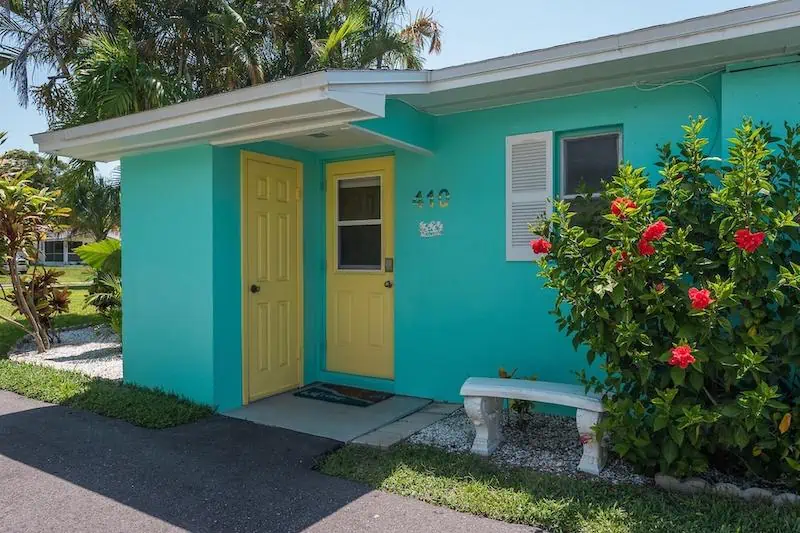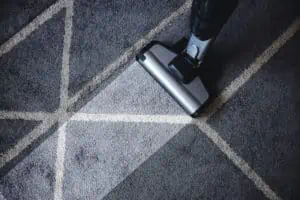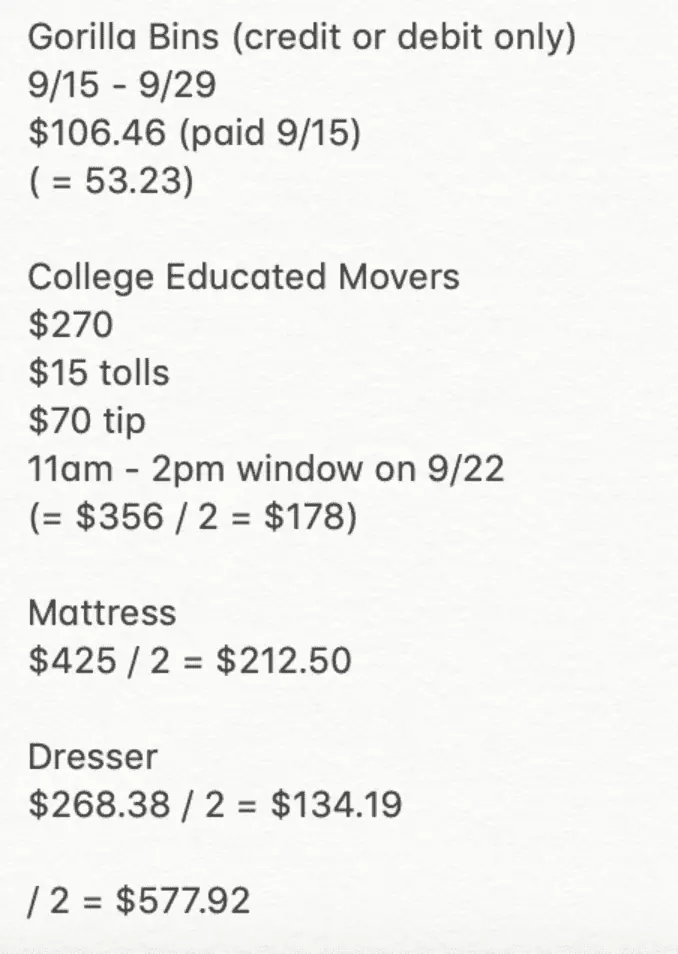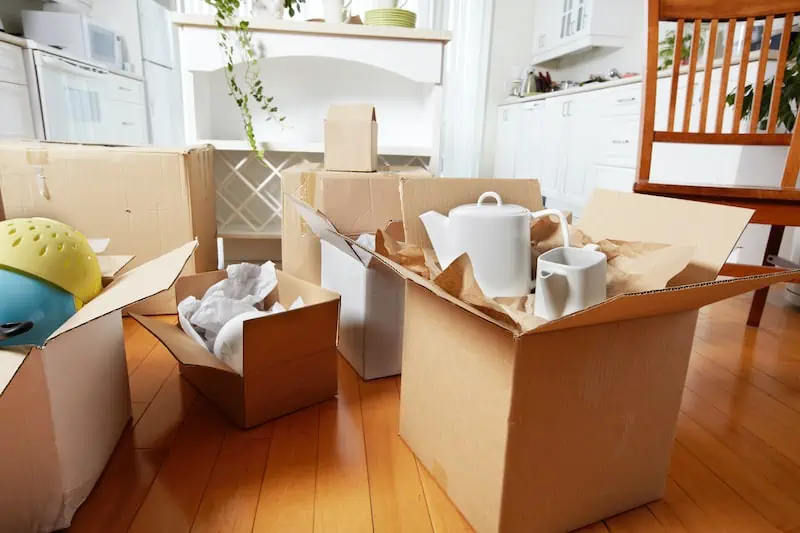When my family and I moved to Clearwater, Florida as a teenager after having grown up in Los Angeles, I thought my life was over.
I vowed that as soon as I had the chance, I would move back to California. But more than 20 years later, welp, I’m still here. It turns out, Tampa Bay has become an impressive metropolitan center in its own right; it has an affordable housing market, reasonable cost of living, and white sugar sand beaches to boot. I mean, who wouldn’t want to live here?
With the current pandemic moving frenzy, many are eager to relocate to the Tampa area. If that includes you, this guide is probably just what you’re looking for. Here’s an overview of some of the best Clearwater neighborhoods to choose from and some tips on how to snag the perfect-for-you house in this ultra-hot market.
Where Exactly Is “Clearwater”?

Clearwater is a city in Florida located on the Gulf Coast of Central Florida, and it’s known as part of the Tampa–St. Petersburg–Clearwater metropolitan area, which occupies a sprawling 2,554 square miles and contains a population of 3 million people and growing.
Should you move to Clearwater?
This area is growing for a reason. Each of the trio of cities (i.e., Tampa Bay, St. Petersburg, Clearwater) have their own distinct personality. With the #1-rated white-sand beaches in the country, the Clearwater area is best described as spring break heaven. Indeed, living in Clearwater is kind of like being on vacation all year long. (Plus there’s the added benefit of residing in a major metroplex without feeling lost or overwhelmed in urban sprawl.)
“…to New Yorkers, Californians and other folks hailing from states with much higher home price tags, Clearwater real estate is a really amazing deal.”
But it’s not just a tourist’s paradise! Tampa Bay is also a great place to live and do business. Tampa was just named the fifth-best city for real estate investors by PwC and the Urban Land Institute, and the number-four city in the U.S. for net inflow of residents in 2021 by Redfin. With $13 billion being invested in massive development projects in the area, especially along Tampa’s waterfront, the city is well-poised to become one of the South’s preeminent cities in the twenty-first century.
Get Help Unloading Your Rental Truck
See prices for movers by the hour—instantly.
Read real customer reviews.
Easily book your help online.
An Overview of the Clearwater, Florida Real Estate Market in 2022
According to Redfin, as of March 2022:
-
Clearwater home prices were up 43.4% over last year, with a median price of $344K
-
Homes in Clearwater stay on the market an average of 11 days, compared to 25 days the previous year
-
“Hot” Clearwater homes can go pending in about 4 days and sell for about 3% above list price
To learn more about the current Clearwater real estate market and get some expert insights on the best neighborhoods, I reached out to a longtime friend, Matt Sharp, who’s been a realtor in Clearwater for 18 years (crazy how time flies!). (He’s also a screenwriter with a feature film in the works.)

When I asked Matt about how the Clearwater real estate market is going, he confirmed that it’s about as crazy as I suspected after having seen my friends scramble desperately over the past couple of years to buy homes here. He remarked the only other time he’s seen the market this hot was during the 2006–2008 real estate boom.
To Floridians, today’s home values seem daunting. But, as Matt explains, to New Yorkers, Californians and other folks hailing from states with much higher home price tags, Clearwater real estate is a really amazing deal. Combine that with year-round sunshine, no state income tax, plentiful golf courses, and a thriving economy, it’s no wonder everyone is flocking to Tampa Bay. Plus, given the cultural influx of remote workers, many Californians and New Yorkers don’t even have to give up their higher-paying jobs to move here.
In fact, Matt says he’s seeing homes snatched up even faster than what Redfin is reporting: “You blink and they’re gone. If it’s priced appropriately and in decent shape, it will be off the market within 24 hours with the bidding price well above asking.” But don’t get discouraged. Matt says as long as you’re prepared to act fast, it really is possible to land yourself a home you love in Clearwater.
More Clearwater, Fl real estate facts
- According to Realtor.com, the median listing home price is $330K and the median listing home price/sq ft is $244
- Clearwater has a total area of 39.2 square miles, 25.6 of which is land and 13.7 percent of which comprises beautiful blue-green waters
- As of the 2020 Census, the population is 117,292, the 17th largest city in Florida
- As of the moment of publication, there are 928 homes for sale, ranging from $6,500 (those would be one of the area’s many mobile and manufactured homes) to $25.9M
Best Neighborhoods in Clearwater, Florida: 2022 Real Estate Guide
Here’s a neighborhood-by-neighborhood guide to the greater Clearwater area.
Clearwater Beach
Median home price: $725K (Realtor.com)
We may as well start with Clearwater’s crown jewel — world-famous Clearwater Beach. Across the Intracoastal Highway and accessible by the Clearwater Memorial Causeway, this barrier island boasts two-and-a-half miles of white silky-smooth beaches.
Clearwater Beach draws 5 million visitors a year. The beaches ranked as America’s number one beach in 2016, 2018, and 2019, and number six for World’s Top Beaches in 2019 by Tripadvisor. (Fun fact: Clearwater Beach is also the home of former pro wrestler and TV personality Hulk Hogan, whom I occasionally run into at the grocery store — nice guy.)
Over the years, Clearwater Beach has morphed from a laid-back beach town into a highly developed tourist destination offering a number of towering (read: sun-blocking) resorts, yacht clubs, family-friendly attractions, restaurants, and bars. “It’s mostly occupied by condos, the majority of which are purchased by snowbirds and out-of-towners,” Matt explained.
I feel that it’s only fair to warn you that causeway traffic is very real — especially during Spring Break. However, my Clearwater Beach friends assure me it’s well worth the trade-off for their waterfront views.
Mandalay

Price range: $850,000 to $5.5M
Located in the northern part of Clearwater Beach, Mandalay mostly features modest and mid-sized houses. Your choices range from historic 1930s-built, character-rich homes to brand new construction. The neighborhood is quiet and peaceful, and the beach is just a quick walk (or golf-cart drive) away.
Island Estates

Price range: High-$700,000s up to $7M
If you’re after waterfront property, Island Estates is your go-to neighborhood, with most of its homes lying along the Mandalay Channel or the Pope Channel. Featuring condominiums and mid-size to large single-family homes, the area attracts a mix of families and retirees. The area is also conveniently located next to the Island Estates Yacht Club, the upscale, waterfront Island Way Grill, and the world-renown Clearwater Marine Aquarium (most famous for being the erstwhile home of Winter the Dolphin, who sadly passed on late last year).
Moving far away?
Do it cheaper.
MovingPlace can save up to 40% compared to traditional interstate moving companies. Click here to learn how.
Sand Key

Price range: Mid-$500,000s to as high as $5.5M
Sand Key lies just south of Clearwater Beach over the Sand Key Bridge on the border between Clearwater Beach and upscale Belleair Beach. Sand Key could probably be nicknamed “Low Key” for its laid-back feel. Fewer resorts and condos populate this section of town, which means noticeably less traffic. Most of the homes are mid-size vacation homes, dating back as early as the 1970s. The community boasts access to outdoor amenities such as Sand Key Park, Sand Key Beach, and Abu Seba Beach.
Its residents are also fortunate to enjoy close proximity to the award-winning Columbia restaurant — a Mediterranean-style beauty once named one of the 100 Most Scenic Restaurants in America by OpenTable thanks to its breathtaking views of the Intracoastal Waterway.
Presidential Neighborhood

Price range: $400,000s to the mid-$700,000s
The Presidential Neighborhood — so-called for its streets named after American Presidents like Jefferson and Madison — offers quaint historic charm only minutes from Downtown Clearwater. If you’re looking for older but still well-maintained homes from the 1930s and 1940s with lots of character, this neighborhood is for you. It’s also as family-friendly as you can get; it’s not uncommon to see children playing outside in the streets, and Halloween is a big deal. It’s our go-to spot for trick-or-treating every year, anyway.
Harbor Oaks

Price range: $6.5M to $18M
Located just south of Downtown Clearwater and stretching along the Intracoastal Waterway, Harbor Oaks is an upscale neighborhood containing mid-size homes, larger homes, and luxury estates dating all the way back to 1915. With its historic character, Harbor Oaks reminds me of the Presidential Neighborhood, but the homes are more widely spaced out and larger (square footage averages 2,500, and garage apartment additions are common). Lush greenery, waterfront views, and quaint, covered Magnolia Drive Pier makes the neighborhood ultra-strollable.
Coachman Ridge

Price range: $550,000 to $650,000
Coachman Ridge is one of the most popular neighborhoods among my family-minded friends, and Matt agrees; it’s the place to be for families for its insulated, community-oriented feel. The neighborhood often hosts block parties and neighborhood-wide yard sales, and on an ordinary day, you can catch children playing in the wide streets. “Yard sizes are also decent here — not massive, but bigger than the ones you’ll find in brand new developments,” Matt added.
Keep in mind as well that as the subdivision was built in the 1980s, so many homes need updating. You’ll likely need to make sure you have some room in your budget for renovations if you pick a Coachman Ridge home.
Coachman Lake Estates

Price range: $850,000 to $900,000
Located just north of Coachman Ridge, Coachman Lake Estates is one of Clearwater’s “best-kept secrets,” according to Matt. It’s so well kept that I hadn’t even heard of it myself. Matt says it’s an ideal neighborhood if you’re looking for a very big house (2,700–4,500 square feet) and lots of land — lot sizes tend to measure an acre or more. The homes also offer distinctive character; no cookie-cutter neighborhood here.
Old Clearwater Bay

Price range: Mid-$200,000s to $2.5 million
Stretching along Old Clearwater Bay off Fort Harrison Road between Dunedin and Downtown Clearwater, this strip of land is narrow but densely packed with a mix of luxurious waterfront estates, vacation homes, and modestly sized bungalows dating back to the 1930s and 1940s. The older homes and pre-1960s mom-and-pop commercial properties lend the area some historic charm, but the up-and-coming area is definitely in the earlier stages of coming up. Because of the smaller house sizes (not counting the waterfront properties), residents tend to skew younger and are typically single.
Countryside

Price range: Mid-$400,000s to over $1M
Built largely during the massive 1980s Pinellas County population explosion, Countryside occupies the northern part of Clearwater. But it’s home to a number of neighborhoods and subdivisions of its own. This area contains a mix of condos, townhomes, and single-family homes. Many houses have their own unique character and can range from mid-size to larger, from around 2,200 square feet to 3,600 square feet.
Countryside attracts a lot of affluent families (Countryside High School is nicknamed “Country Club High School” and some of its students have been known to sport luxury vehicles). The private Countryside Country Club offers golf, swimming, and tennis. Countryside residents also enjoy close proximity to Countryside Mall, which boasts a movie theater, an ice skating rink, popular chain restaurants such as P.F. Changs and the Cheesecake Factory, and the only Whole Foods (!) in Pinellas County.
Get Help Loading Your Container
See prices for movers by the hour – instantly.
Read real customer reviews.
Easily book your help online.
Greenbriar

Price range: Mid-$200,000s to around $500,000
On a budget or just starting a family? Greenbriar is one of the more modestly priced neighborhoods on our list. First built in the 1960s, the neighborhood is made up of post-WWII tract homes as well as 55+ condos. With smaller homes — mostly 2-bed 2-bath and an occasional 3-bed 2-bath — Greenbriar is popular with younger families. Tucked away from the hustle and bustle, Greenbriar is a quiet, serene neighborhood, but it’s only a short drive to outdoor recreation, entertainment, and dining options including Countryside Mall, Caladesi Island State Park, and the On Top of the World Golf Course.
By the way, Greenbriar is a deed-restricted community with HOA fees, but residents have access to Greenbriar’s community center with a pool, game area, pool table, and fitness center.
Seville
Price range: Mid-$100,000s to the mid-$200,000s for condominiums
Rental prices: $1,500 to $3,000 per month
Not quite ready to buy a house, or need more time to look? The condominiums and apartment homes of Seville might be right for you. Centrally located within Clearwater and right off US-19, Seville offers easy access to the rest of Tampa Bay. The neighborhood is adjacent to Clearwater Mall, a sprawling outdoor shopping center that includes Costco, Super Target, Ross and others, plus a number of chain restaurants. But with Seville’s communities tucked away behind dense greenery and overlooking Tampa Bay, you’d never know you were so close to all that big-city commotion.
My favorite spot near Seville is Bayside Arbors, a waterfront luxury apartment community nestled among 40 acres of majestic oaks, where you can watch dolphins play in the bay from its Mediterranean-inspired community center.
Florida Neighborhoods Close to (But Not Technically) Clearwater
Pinellas County is home to 24 incorporated municipalities, many just a hop, skip, and jump away from Clearwater. Here are a few adjacent and nearby towns to explore during your Clearwater house hunt.
Dunedin

Medium home price: $425K (Realtor.com)
Located just north of Clearwater along the Gulf Coast, Dunedin offers beautiful views of St. Joseph Sound. It’s also home to Caladesi Island State Park, Honeymoon Island State Park, and Dunedin Causeway beach. Dunedin’s vibrant, artsy downtown boasts a variety of galleries, restaurants, and bars, and there always seems to be some festival or other going on down there. Dunedin’s wide array of properties include condos, small family homes, and historic waterfront estates.
Palm Harbor

Median home price: $359K (Realtor.com)
Palm Harbor lies just north of Dunedin, about 15 minutes from Clearwater proper. Its got a low crime rate and great schools — some of the highest rated in Pinellas County. “In Palm Harbor, you can enjoy somewhat of a small-town feel while still being able to easily access the rest of Pinellas County through US 19,” Matt said. Much of Palm Harbor was built in the 1980s, so cosmetic updates may be needed if you choose to buy a home here.
The median home price in Palm Harbor is just slightly above Clearwater, hovering at $359,000. But prices can vary from anywhere in the mid-$200,000s to the mid-$700,000s, with the occasional multimillion-dollar outlier.
Safety Harbor

Median home price: $485K (Realtor.com)
Lying just east of Clearwater along Tampa Bay, Safety Harbor draws a lot of Clearwater residents to its bustling downtown, which like Dunedin, offers quaint small-town vibes, and eclectic restaurants, bars, and shopping. Properties vary substantially from the modestly sized, older homes that were literally built by hand in the 1920s, to large suburban homes constructed during the massive Pinellas County population boom in the 1980s.
If you’re interested in moving to the Tampa Bay area, Clearwater is a not-so-hidden gem and an ideal spot to call home. And for everything it offers, it’s also a surprisingly affordable city (at least for the time being).
The word on Clearwater appears to be getting out, so I recommend you grab yourself a spot in the sun sooner rather than later. Good luck in your search!






 Patch dings in the drywall
Patch dings in the drywall Common stains like dirt, ink, and pet urine are the norm for many landlords. However, you might not get your security deposit back if the carpet is in bad shape. To fix the problem, rent a steam carpet cleaner or hire a professional to come in and clean the floors before you leave.
Common stains like dirt, ink, and pet urine are the norm for many landlords. However, you might not get your security deposit back if the carpet is in bad shape. To fix the problem, rent a steam carpet cleaner or hire a professional to come in and clean the floors before you leave. Pets are messy, and they can often leave unpleasant odors behind. The best way to prevent this is to
Pets are messy, and they can often leave unpleasant odors behind. The best way to prevent this is to  Glass stovetops can easily collect gunk that looks like damage, especially because the buildup is notoriously difficult to remove. Get rid of grime on your glass stovetop by spraying it with distilled white vinegar.
Glass stovetops can easily collect gunk that looks like damage, especially because the buildup is notoriously difficult to remove. Get rid of grime on your glass stovetop by spraying it with distilled white vinegar.  In many cases, clogged drains are a gray area, depending on whether the clog was caused by normal vs. irresponsible use of the plumbing. A clog often does not constitute damage that would allow a landlord to keep your security deposit, but that doesn’t mean they won’t try.
In many cases, clogged drains are a gray area, depending on whether the clog was caused by normal vs. irresponsible use of the plumbing. A clog often does not constitute damage that would allow a landlord to keep your security deposit, but that doesn’t mean they won’t try.  If your kitchen or bathroom cabinets are broken or ripped from the hinges, it could cost you some or all of your security deposit.
If your kitchen or bathroom cabinets are broken or ripped from the hinges, it could cost you some or all of your security deposit. 
 This is an oft-repeated belief about women, but in this case, her suggestion isn’t simply fleeting. A version of this sentiment is reflected in various peer-reviewed studies which investigated key personality traits to succeed in business that go beyond knowledge, technical ability and experience. One 2016
This is an oft-repeated belief about women, but in this case, her suggestion isn’t simply fleeting. A version of this sentiment is reflected in various peer-reviewed studies which investigated key personality traits to succeed in business that go beyond knowledge, technical ability and experience. One 2016  When we look at where people who moved for love ended up, there are some big differences between states.
When we look at where people who moved for love ended up, there are some big differences between states.
 Talking about money can be fraught for me, which I counter by talking about it pretty much all the time to build up my resistance. One area where I still struggle, though, is in
Talking about money can be fraught for me, which I counter by talking about it pretty much all the time to build up my resistance. One area where I still struggle, though, is in 









 Meathead Movers quickly found out there are more than financial risks when taking on this type of endeavor.
Meathead Movers quickly found out there are more than financial risks when taking on this type of endeavor. 